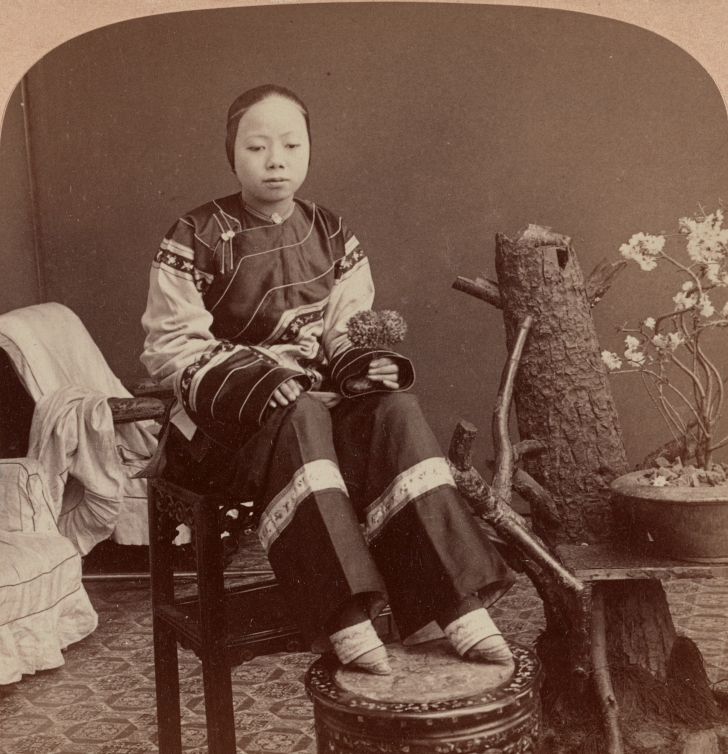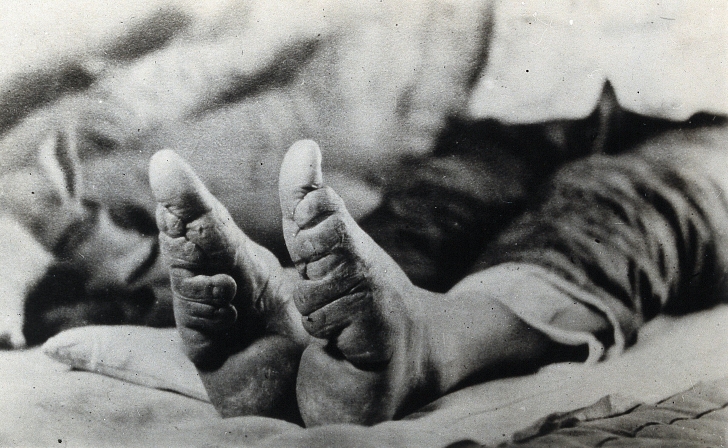A Brief History of Chinese Foot Binding
The practice was recorded long after it was made illegal.
Foot binding is a unique practice that survived in China for around 1,000 years. Even after World War II in some of the more remote regions of the country girls were still suffering from this custom, which means that there are living today still a few women with these incredibly small feet. The history of how the feet were formed into the unnatural (yet fashionable) shape is disturbing, but for many it’s also a fascinating topic of study.

For women of the upper classes in China marriage was hugely important to the success of their families. To that end they were dressed in finely-embroidered garments and were given what was at the time considered the ultimate beauty treatment: bound feet. Girls between the ages of 5 and 7 were subject to this ritual, which required a huge investment of time and resources not only for the initial procedures, but for the rest of the woman’s life. For this reason and others it was something that only females born to wealthy families were subjected to.
First the toes were folded under the metatarsal bones of the foot, excluding the big toe. This procedure would break the toes. Then the entire foot was broken across the top and folded in on itself. The feet were then kept tightly bound everyday, ensuring that the toes never unwound. At times uncooperative bits of flesh or toes may have been removed, but fracture of the bones and wrapping were the critical parts of the process. The ideal result of foot binding was to get the foot down to a minuscule 3 inches in length.

The practice was begun after a 10th century female dancer for the royal court named Yao Niang bound her feet into half-moon shapes for a specific dance that was performed on a giant lotus flower decoration. Emperor Li Yu (937-978) was so enamored of the look that it spawned a trend among high-ranking families to bind their daughter’s feet in order to be seen as beautiful and fashionable. For this reason the bound feet were often referred to as lotus or lily feet. Despite the lyrical reference and the strong adherence to the custom, the practice of foot binding was not religious, nor was it required by law. However, a family of means would have been considered remiss if their daughters did not receive this treatment and it would hurt their chances of a fortuitous marriage later on.
The foot binding process was very labor-intensive process, and precluded doing any kinds of manual work later on. Once the binding had begun walking, doing chores, and even standing would become incredibly difficult. Women with bound feet had to take very small steps and walked with a sway of the hips in order to help them maintain their balance. Both of these traits were considered graceful and feminine at the time.

Women with bound feet were at high risk for infection and gangrene, which is why the wrappings on the feet had to be changed every few days. This was another aspect of the process that necessitated money since servants and doctors were needed to attend to the woman all through her life.
Some infections of the bound feet were serious enough to cause death, but the vast majority survived. Later in life other health problems associated with bound feet included lumbar disturbances and broken bones from falls since the women could never again walk or stand in normal positions.

While the custom sounds gruesome and unnecessary to us today, small feet for women have long been valued across Europe, Africa, and in many other areas of the world where it is thought that small feet are a sign of femininity even to this day.
The custom was outlawed in China in 1912, though new instances of foot binding were known as late as the 1950s.
Learn more about how the feet were bound and see some of the tiny shoes these women wore in the vide below.
SKM: below-content placeholderWhizzco for DOT

